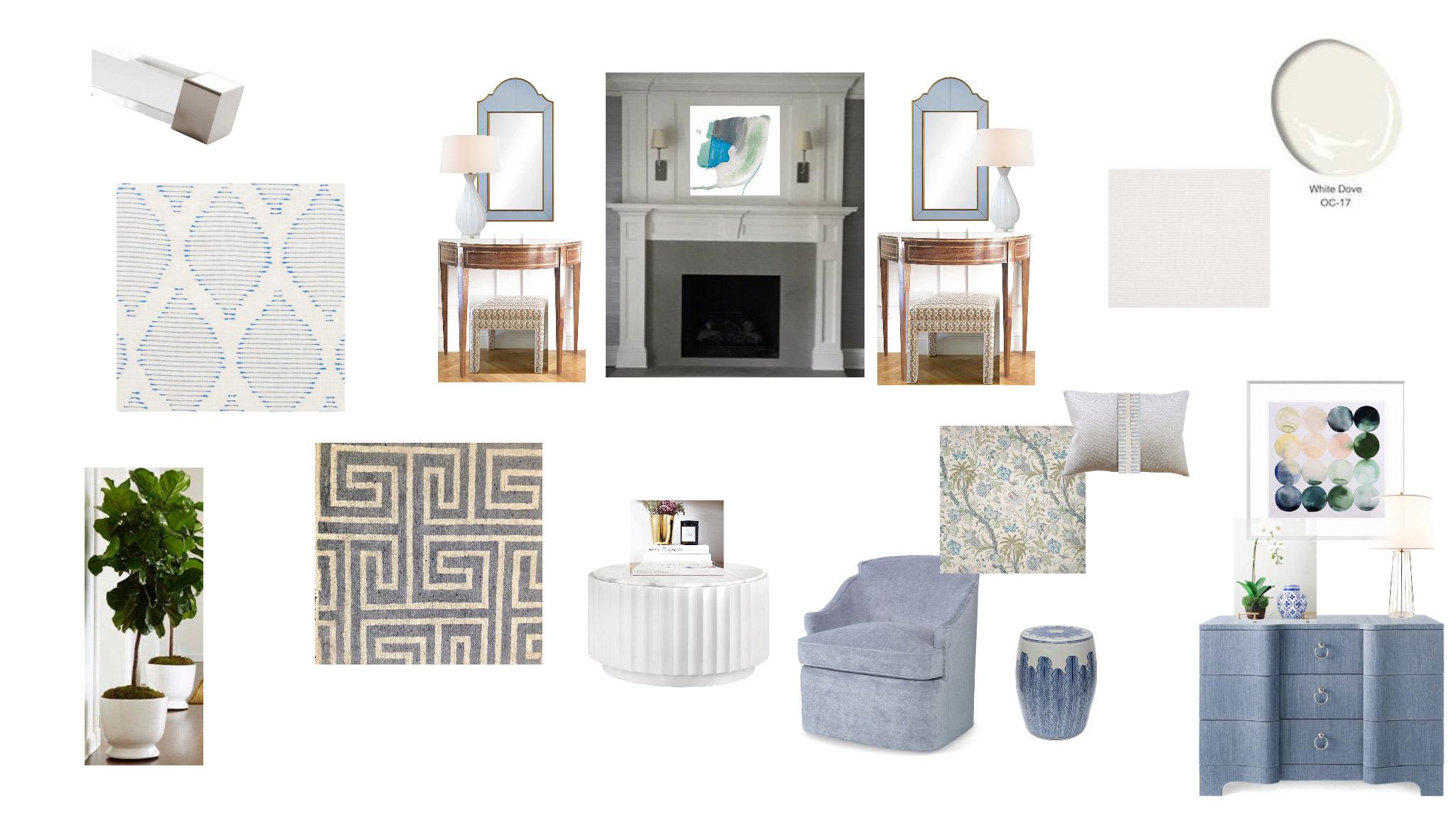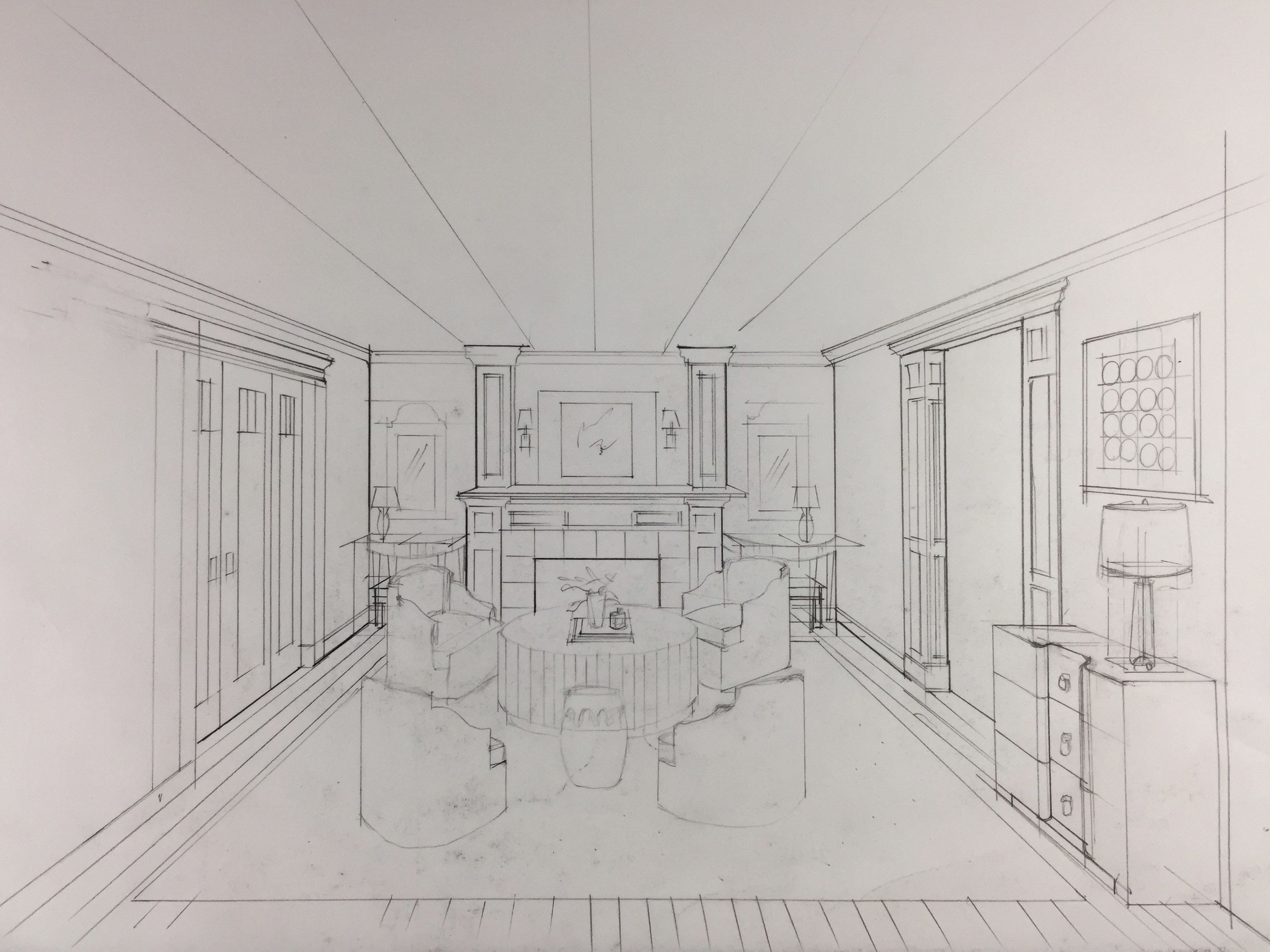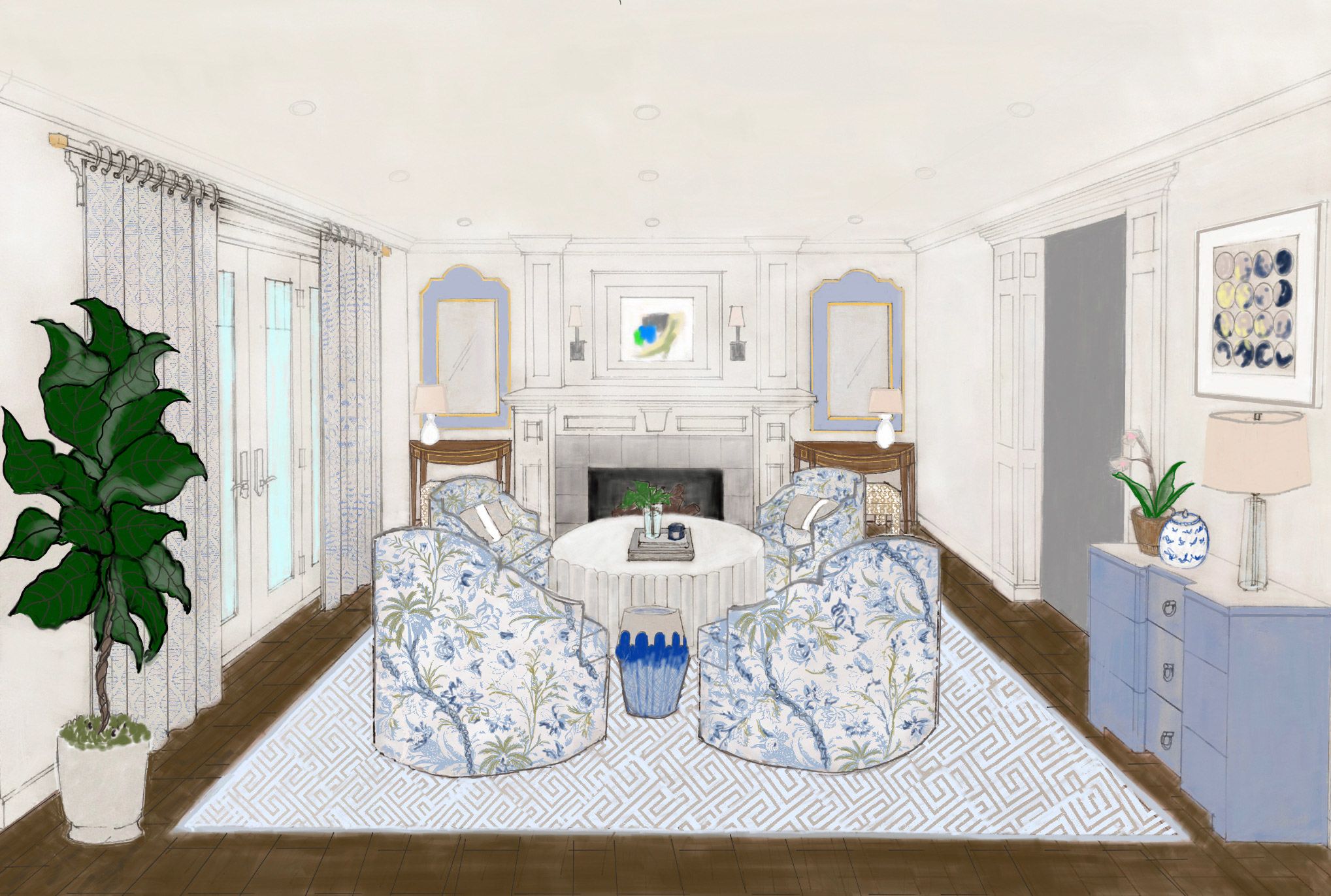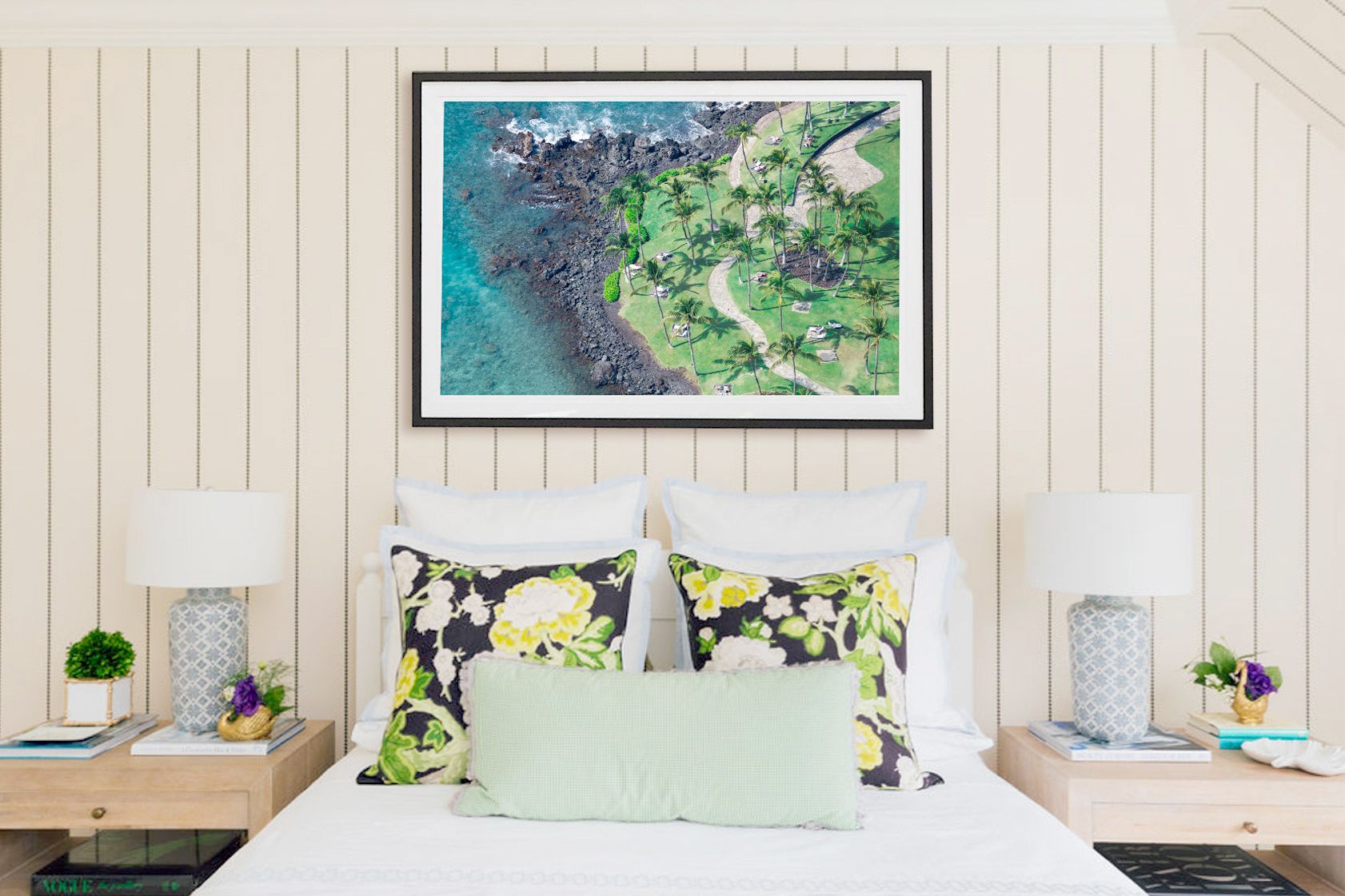If you’ve ever wondered exactly what goes into bringing a space to life, then you’re not alone. Many professionally designed spaces seem SO perfect (yet, perfectly lived-in and casual at the same time), that it can be hard to wrap your mind around how they go from a simple concept to a real-life living space. But luckily, one of our pros is tackling this concept and sharing her professional wisdom with us today… Prudence of Prudence Home + Design is back on the blog, and she’s diving into the interior design process from start to finish and what you can expect when working with an interior designer below. Take it away, Prudence!
Designing your home can feel overwhelming and intimidating. You know what you like and don’t like, however it’s a struggle to bring your vision to life. Well, you are not alone if you find yourself feeling this way and that is why there are interior designers to help create the home you want without making costly mistakes. Interior design is a profession that can save you time, money and increase the value of your home. Hiring a designer is an integral step to achieving the home you want within a budget that is comfortable. Many people have no understanding of what a designer goes through to get the home their clients desire, but I am about to shed light on the intensive process of making a house a home.
First and foremost, your interaction with an interior designer becomes an integral relationship during your time collaborating. It’s almost like a marriage, so make sure you choose one whose work inspires you, but that you like personally and feel comfortable sharing your opinions with. Two-way communication is a must for successful design from every aspect of the process.
THE DESIGN PROCESS
As interior designers, we work really hard to ensure our clients homes reflect their personality and style so they are not living in someone else’s. An integral part of the initial collaboration is finding out what clients truly want for their home based on their needs, taste, and style.
Usually, an initial meeting has taken place understanding what the client wants to do in their home, rooms involved, and timing discussed. Once the designer is hired, a follow-up meeting is scheduled where the design team comes to photograph the rooms and measure for new furniture and any necessary pieces/elements to complete the room. They will discuss what is important to have in each room so that they meet the rooms individual needs. To understand their style and vision, some designers offer a detailed questionnaire; others may spend time with the client for an extended period looking at imagery and talking. We have found that using secret Pinterest boards is an effective way to do this step by showing inspirational images by room, as well as paint colors, wallpaper, fabrics, furnishings, etc. to see what our clients like and do not like. We ask that our clients comment on these images openly and honestly. We clear the boards of everything they don’t like so we can see everything they love. This serves as a great launching pad to the creative process of designing their spaces.
After the initial collaboration is underway, a designer will come to the home with any additional sub-contractors to discuss any building, painting, wallpapering, window treatments, custom furniture, etc. Any outside workers who are needed to fulfill the vision are present so once the plan is identified, quotes are established for their piece of the design pie. During this time, all necessary measurements are taken and recorded so that all furnishings suggested fit and enhance the space and flow. Many costly mistakes come from mis-measuring, so while this step can be tiresome, it is integral to the design plans.
DESIGN BOARDS
There are many tools to create concept boards where you can place all the items needed for the room being designed. We use Morpholio Board as it is an amazing tool to create our concepts, but we can also use it to track what we are selecting from vendors, as well as make tear sheets for our clients if needed. Since we look at so much product, it is hard to keep track of all the vendors it can take to fulfill the needs of a project. Morpholio Board allows us to do this seamlessly. Below is an example of a Morpholio Concept Board we created for a client. It is in 2D format so it can be hard for a client to “see” the room from our eyes.
Therefore, many designers can take their 2D boards a step further by working with CAD artists or people who specialize in mechanical drawing so the boards can turn into the actual room in full 3D format. We work with someone on our team who is an artist and a specialist in Morpholio Trace, a 3D rendering tool included in the suite of Morpholio offerings. She measures the spaces in detail including elevations and then actually manually draws it. Once drawn, she then brings it into Morpholio Trace to “color” it. It’s pretty amazing! Here is the sitting room we planned in the 2D concept board, then in the 3D drawing, and then spatial rendering done by the specialist on our team.
2D Client Concept Sitting Room Board:

3D Spatial Drawing:

3D Spatial Rendering:

DESIGN CONCEPT
While these renderings are expensive, they are extremely helpful in enabling clients to see the room. Not all clients decide to do this step, however they should as it proves to be well worth it from both an emotional and financial perspective. They also serve as a verification that everything works proportionately. Once we have determined the plan, we will gather all the quotes from the sub-contractors, furniture vendors, fabric vendors, wallpaper, lighting, and rugs so that when the plans are presented, all the pricing is included. Additionally, we will reserve stock for the fabrics we are suggesting as well as wallpaper so that when it is time to order it is available. It is integral to know the lead times on everything suggested in the plan so that the client is always abreast of the time it will take to complete the room. Consistent communication is key every step of the way to eliminate stress for all—especially the clients.
PRESENTATION
Once the design concept is determined, pricing is gathered, and reserves made, it’s time to build the presentation for our clients. This can be a very laborious process as all elements for each room are placed into a presentation tool, as well as all pricing. Here is an excerpt from one of our presentations. Many designers use different tools to build their presentations. We use Morpholio Board and Keynote. Once the presentation is finished, we turn it into a PDF and then have it printed and bound so our clients can keep a hardcopy to refer back to. When we arrive on presentation day we have all furniture chip samples, fabric, paint and wallpaper samples, rug samples and anything else we can bring for the client to touch and feel. This is vital in their being able to see the vision as we see it.



After the presentation, if adjustments to product needs to be made, a new design can ensue depending on the level of changes, however since all the upfront homework about the client has been completed, it is usually just a few fabric tweaks or no changes are needed. Designers typically make the changes quickly, including updating all pricing, to stay on track with the project. Keep in mind, we are typically working with a number of clients at the same time so keeping things moving is integral for all clients’ projects to finish according the project calendar. The updates are then sent to the client for approval. Once approved, the ordering begins and the contract work is put on the calendar for completion prior to any furniture installations.
Once the ordering and contract work begins, it is our job as designers to keep an eye on the entire lifecycle of the design plan, shipping logistics and management, as well as manage other professionals involved for a successful and seamless experience for clients. We all have busy lives and it is not the client responsibility to understand where all the goods are, manage workers in their home, etc. That is why they hired a design firm.
INSTALLATION
While the work in the home is being completed, all the goods are typically sent to a commercial receiver where they are held until the spaces are ready for installation. Installation day is such a fun day for the client and designer, however is also often filled with anxiety for us designers. On our installation days, I always hold my breath that the rooms look as good in person as they did in my head and in the renderings!! So far so good in that regard!! Another important aspect is that everything fits as it should! All that measuring and confirming of sizes paid off! Now, time to pop the cork and celebrate with lots of champagne once the last item is placed. This day is like Christmas for clients! Their spaces are transformed in front of their eyes and watching their reactions and smiles is why we do what we do!
FINISHED PRODUCT
Here is a completed guest room we just professionally shot. It’s so fun to see these rooms come to life!

A project typically can take up to six months or longer to complete given all the steps and furniture lead times. But, be patient, as you will be happy in the long run. All designers want their clients to enjoy their home long after the work is completed.
How fascinating is this process?!
To say we were in awe at the entire thing would be an understatement. To work with Prudence on your own space, or simply follow her upcoming projects, visit her website and follow her on Instagram.
Until next time,
Xx Team GM
Photos: (Header) Katie Tenboer, Julia D’Agostino